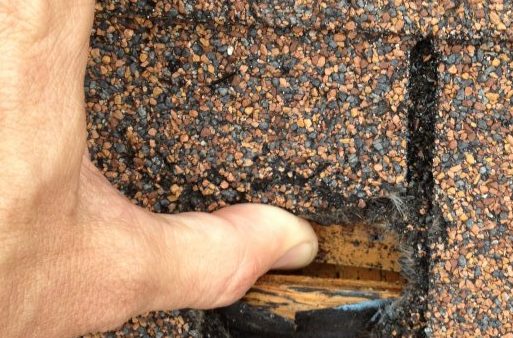Damaged Shingles on your Roof: Storm Damage or Age? Dallas Contractors Reveal Truth
Many factors must be considered when identifying storm damage on roof shingles. Commonly, the type of material on the roof plays a big role in the identification process. Obviously, those who have asphalt shingles may receive more damage in comparison to other types of material.
If a home is in an area that received a recent storm, an inspection should be done to look for any trace of material deterioration. Before becoming too adventurous and climbing onto the roof, it is imperative to know how to differentiate storm damage from the natural age-related wear on roof shingles.
Probable Signs of Storm Damage
There are three common signs of damage to roof shingles when hit by a storm. This includes granule loss, cracking (circular form) and bruising. The severity of the damage can be identified by identifying the following visible signs:
Granular Loss – During the roof inspection, a thorough check for missing granules should be performed. This sign is best demonstrated when the substrates or black felt of shingles are exposed.
Cracking – When ice stones hit the material, circular cracking will develop. The size of the crack indicates how big the stones were that hit the roof and will suggest the extent of the damage.
Bruising – This examination can be done by running a hand over the shingles and feeling for dimples or indentations. To reveal hidden bruising, the thumb can be pressed on the indentation to check for a soft bouncy feeling. It is advisable to leave this step to a professional. But if you feel you must climb onto your roof then be sure to exercise extreme caution.
Storm Damage vs. Aging
In order to uncover the effect of storm damage, it is crucial to begin by thoroughly searching the eaves for granulation. Accumulation of mineral granules indicates that there is a serious granular loss to the material. Severe loss of mineral granules will eventually expose the substrate, which can turn out to be a point of penetration and potential entry of water into the underlying area. Smaller areas of granular loss may be observed from normal aging. Worn out shingles often occur over a long period of time due to the exposure of the material to various weather changes.
Blistering is more difficult to differentiate between the effects of the impact of falling rain, hail and aging; however, there is a strong claim that ice stones cannot cause blistering but rather produce dents. This has proven to be true due to the strong blow
delivered when hail hits the structure and dislodges the granular layer, exposing the felt material. In the final analysis, the destruction caused by ice stones causes a severe granular loss while natural aging has a more gradual loss that usually develops over many years.
When hail hits asphalt shingles, it can cause immediate damage. Sometimes, it is hard to distinguish the difference between storm damage and old roof shingles. Knowing the probable signs of each event will help to put a clear line of distinction between the two.
The most apparent sign that separates the two is the rate of granular loss. Hailstones and heavy storms produce rapid granular loss while old shingles undergo a gradual loss. So now, when looking at a roof, it is possible to see if it is storm damage or if it is age-related wear.
Important Reminders
Before discussing the basic information that will help guide in the detection procedures,the following are important roofing considerations:
Periodic Inspections – In order for a roof to last longer, regular visual inspections must be performed. This will allow for the early detection and recognition of any potential issues before the problems get any worse. Looking for any deviation from the normal might be very helpful in maintaining the integrity of the system.
If you suspect you may need storm damage repair services then your next priority should be to call a storm damage repair specialist, such as a local general contractor known for their expertise in Dallas storm damage restoration and repair. Such a business should be experienced in the detection of hidden damage; knowing the difference between normal wear and storm damage. They should educate you to determine if storm damage repair or restoration is needed from Dallas contractors based on the results of an inspection.
For more information on storm damage repair, contact Miller Weedn, the owner of Raintight General Contracting, and an expert in fixing hail damage to roofs. If you are interested in getting a FREE estimate, give us a call at (214) 693-6196 or click HERE.
 214.693.6196
214.693.6196

Leave A Comment